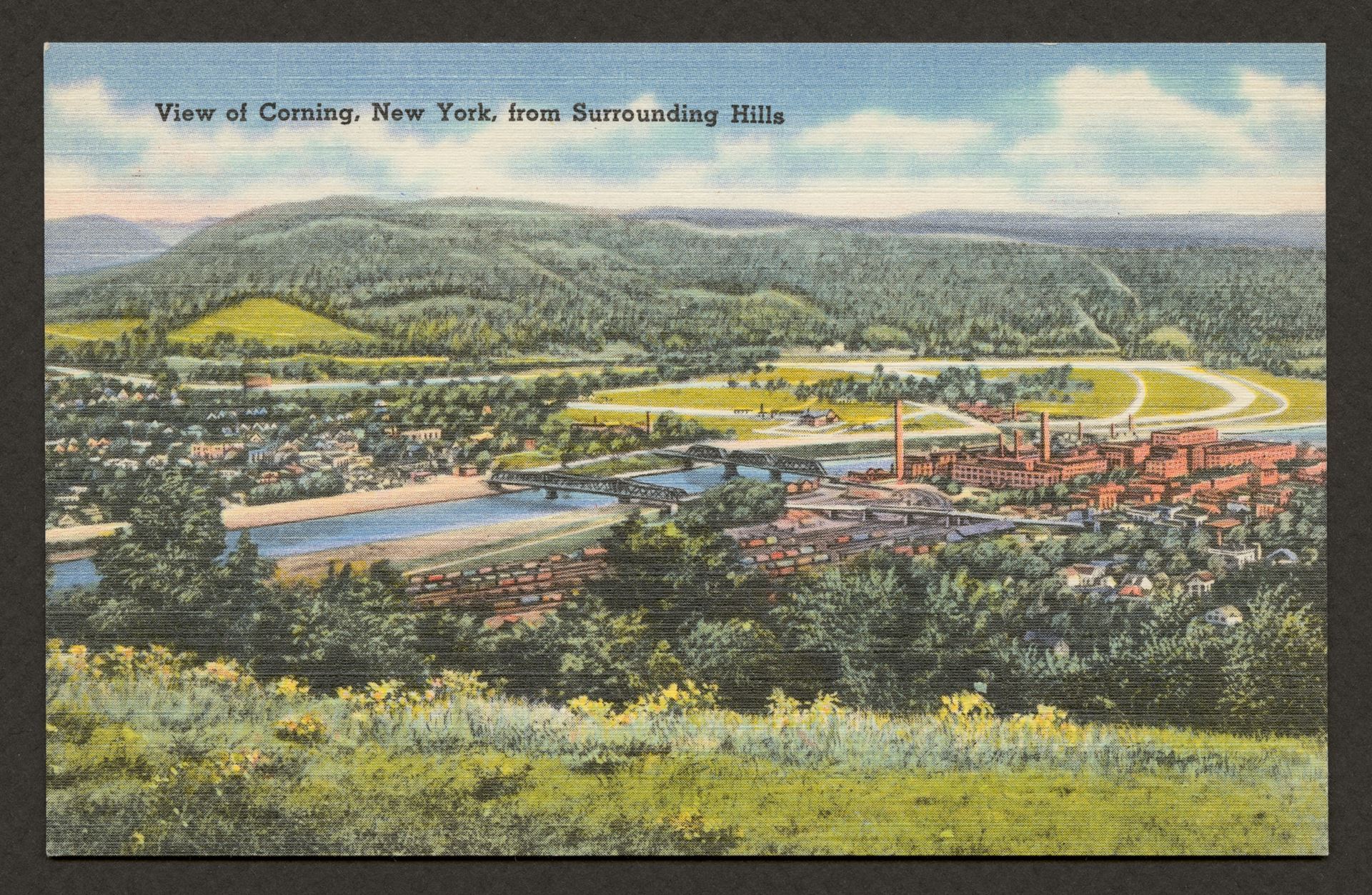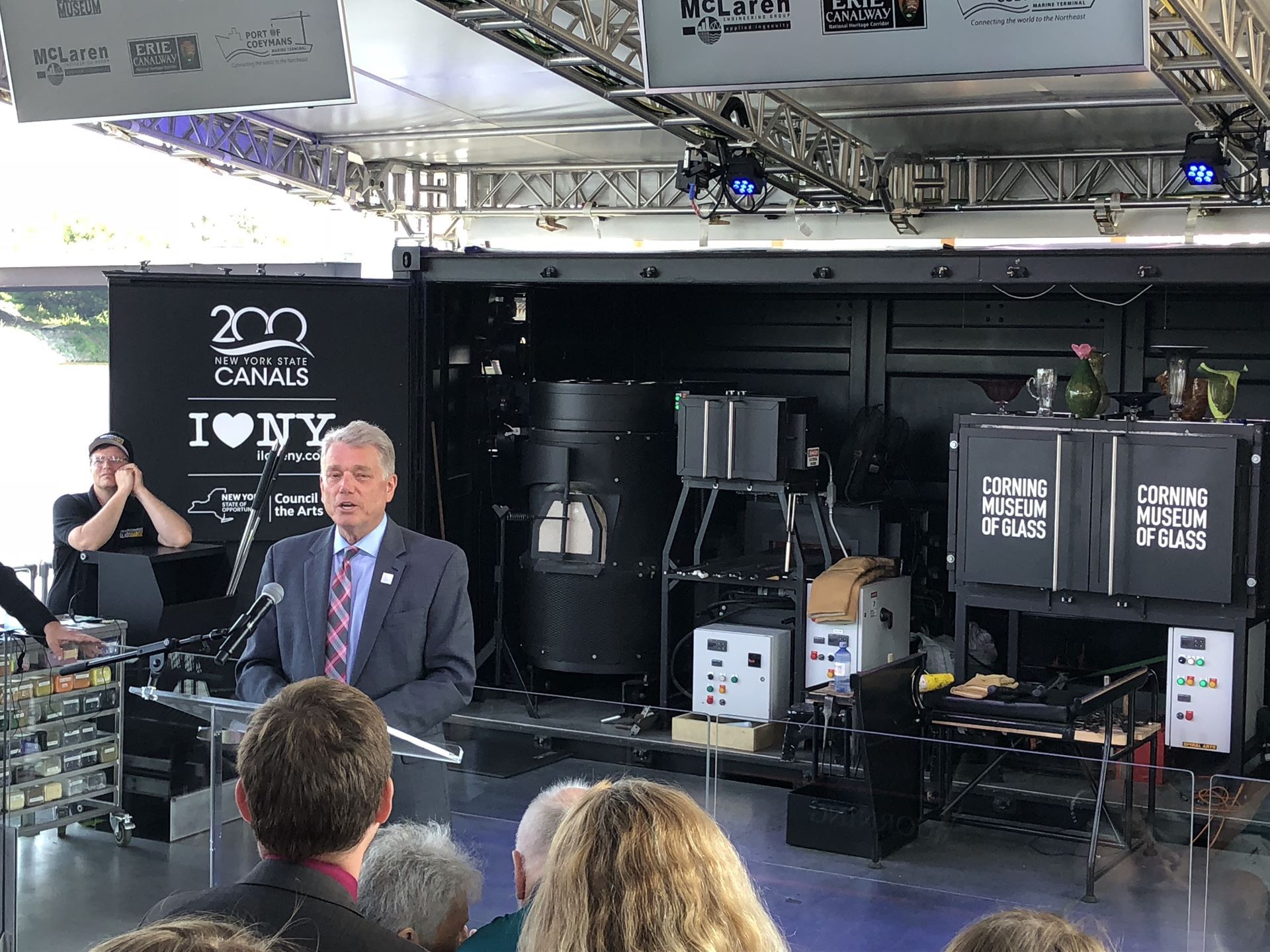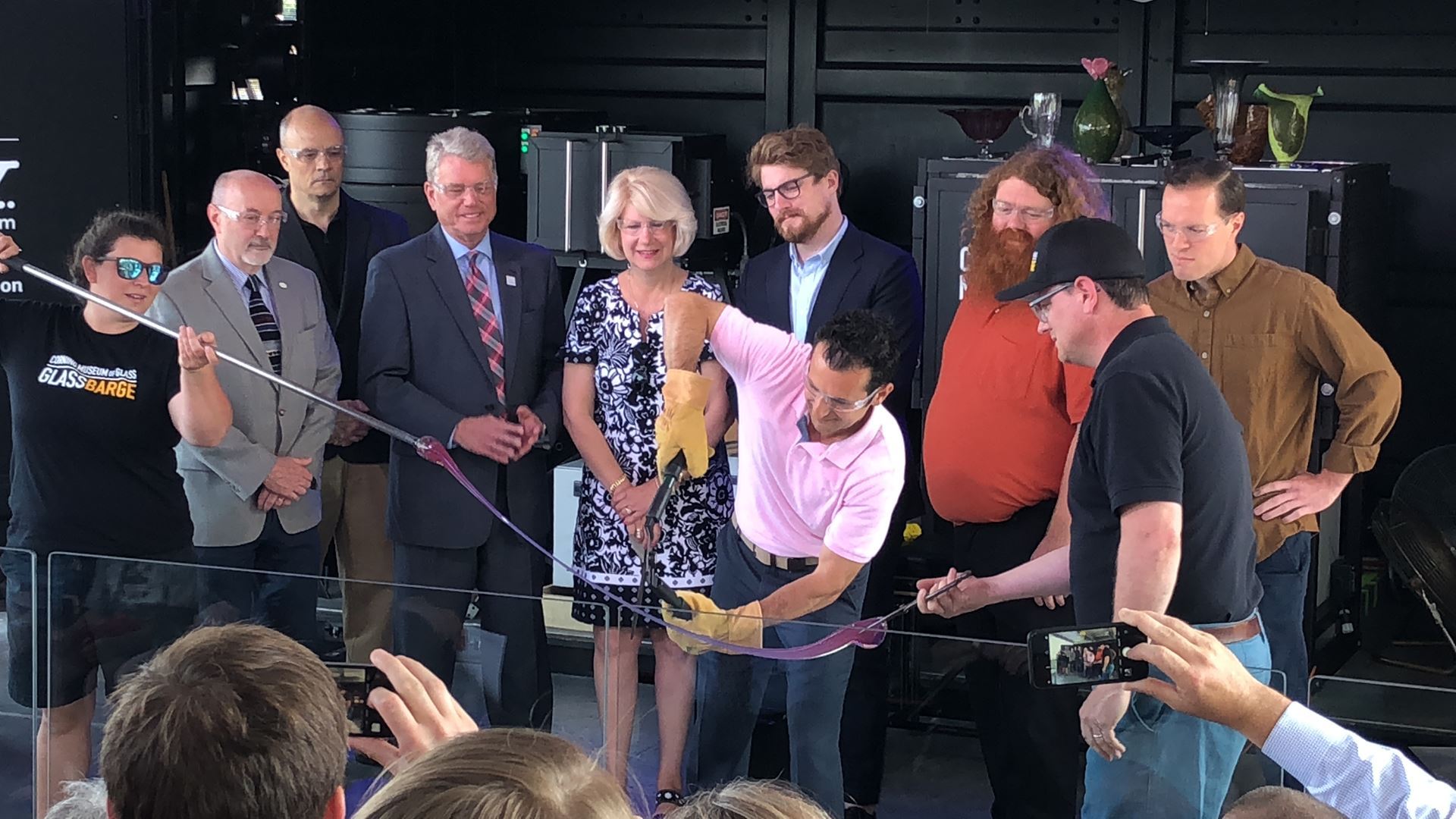Glass may be fragile, but the meaningful connections the Corning Museum of Glass’ GlassBarge forges in the communities it visits are anything but.
On the longest day of the year, residents of the Capital Region gathered together on the Hudson in Troy, NY to learn how glassblowers at the Corning Museum of Glass (CMoG) in Corning, NY make the intricate pieces on display at CMog at a live demonstration on the GlassBarge. “We couldn’t have asked for a better day,” Steve Gibbs, Senior Manager of Hot Glass Business at CMoG, said to the 150 people in the sold-out bleacher seats on the Barge.
The GlassBarge was launched this year to celebrate the 150th anniversary of Corning’s glass-making industry move from Brooklyn to Corning, NY. The celebration coincides with the 200th anniversary of the construction of the Erie Canal – for which the Barge is a signature event – and the 100th anniversary of the Barge Canal, the waterway’s third expansion. Over the course of four months, the Barge will be retracing its original journey before making its final stop in Corning on September 22.

GlassBarge launches in Brooklyn. Photo courtesy of CMoG.
The GlassBarge launched in Brooklyn Bridge Park in late May and traveled up the Hudson with stops in Kingston and Poughkeepsie before docking in Troy and Waterford for five days of demonstrations on the Hudson. Their next stops? Harbors along the Erie Canal.
The original Barge’s journey to Corning started in 1868, when the Brooklyn Flint Glass Company chugged along New York’s waterways before landing in Corning. This led to the evolution of the company into Corning Incorporated, officially bringing the glass industry to the Southern Tier, and resulting in the founding of CMoG in 1951.

Postcard, View of Corning New York from Surrounding Hills, Boston: Tichnor Bros., Inc., about 1930-44.
The Corning Museum of Glass, Corning, New York (CMGL 167595)
“The 1868 trip on the Hudson River and canal systems of New York State launched 150 years of glass innovation in Corning,” said Rob Cassetti, Senior Director of Creative Strategy and Audience Engagement at CMoG, in a blog post published on the MANY website. “We’re honoring this occasion by taking innovations developed by CMoG – namely, our patented electric hot shop and mobile hot glass programming – back to its roots: that notable journey along New York’s waterways.”
And last Friday, that journey was celebrated with a very receptive audience of Capital Region community members on the Hudson, where the GlassBarge was welcomed by local politicians and donors in Troy. Patrick Madden, the major of Troy, noted in his welcome that the history of the Barge’s journey and its connection to New York’s waterways is not lost to the Troy community. “Much has changed,” he said, “but we still see the buildings they passed by 150 years ago.”
Brian Stratton, the former Mayor of Schenectady and current director of the New York State Canal Corporation, said that the GlassBarge journey was “magical,” continuing on to reflect that the Barge was celebrating an inherently New York story. Stratton compared the impact of the original Barge’s journey to the construction of the Erie and Barge Canals, which helped lead to the founding of the Rensselaer Polytechnic Institute (RPI) and the introduction of the engineering program at Union College. “We’re contributing to things that make our great state the Empire State,” he said.

Brian Stratton, Director of the NYS Canal Corporation, at the GlassBarge demonstration in Troy, NY. Photo by Sarah Heikkinen
The local sponsors of the Barge were invited onstage to for a ceremonial hot glass ribbon cutting. A representative of Capital Bank, the Barge’s largest local sponsor, was given the opportunity to cut the ribbon, honoring the Barge’s commitment to engaging the communities it passes through. “I might make my shoes a victim of [the glassblower’s] talents,” he joked, brandishing a pair of large shears before (safely) cutting the hot glass ribbon.

The hot glass ribbon cutting. Photo by Sarah Heikkinen.
After the local supporters of the Barge left the stage, the audience was treated to a stunning demonstration by CMoG glassmaker G. Brian Juk, who has been blowing glass for 20 years, and his two assistant gaffers. Juk walked through the construction of an intricately designed bowl. At various points throughout the demonstration, the crowd was wowed by literal sparks flying off the glowing, malleable glass as Juk carefully crafted the bowl (which was too hot to touch – the molten glass in the GlassBarge’s furnace is kept at 2100°F).

CMoG glassmaker G. Brian Juk shaping the bowl for the demonstration. Photo by Sarah Heikkinen.
As everyone carefully made their way off the Barge after Juk and his gaffers stored their finished bowl in the 900°F cooling oven called an annealer, almost everyone stopped to ask Juk questions about his work.
The GlassBarge will continue its journey westward on the Erie Canal, docking in Buffalo on August 3 before turning around for the final legs of its journey back to Corning. It will be accompanied by the Lois McClure, a replica of an 1862 canal barge, and the C.L. Churchill, a 1964 tugboat; both vessels are part of the permanent collection of the Lake Champlain Maritime Museum.
Dates and locations can be found on the CMoG website.
Words by Sarah Heikkinen.
